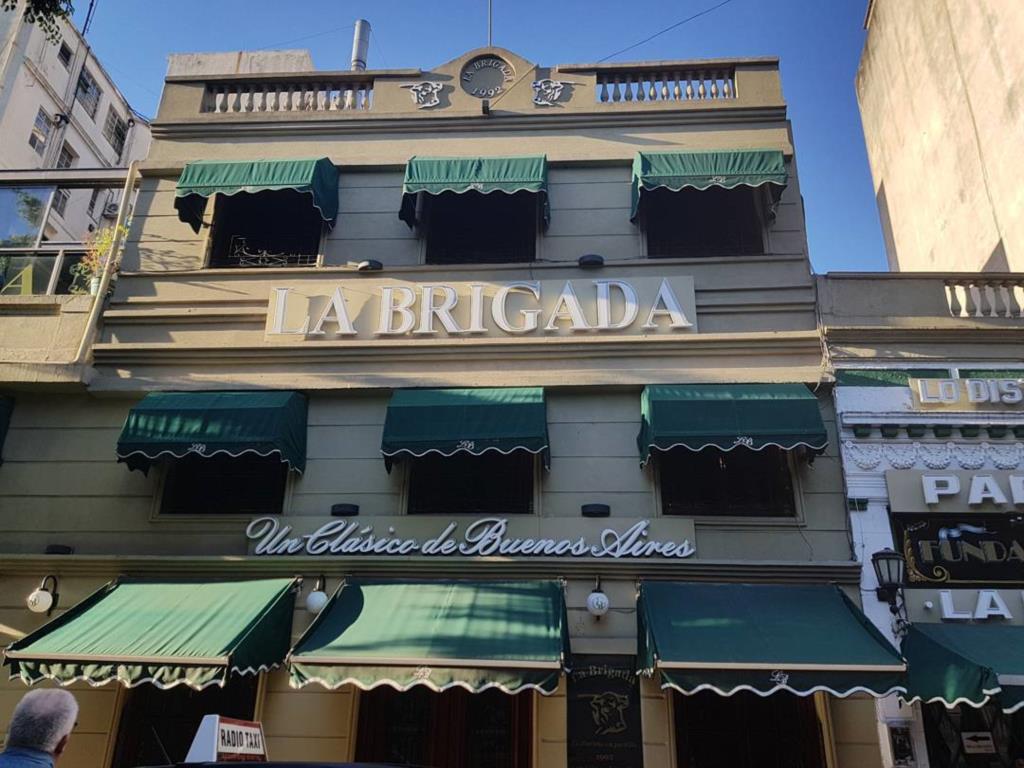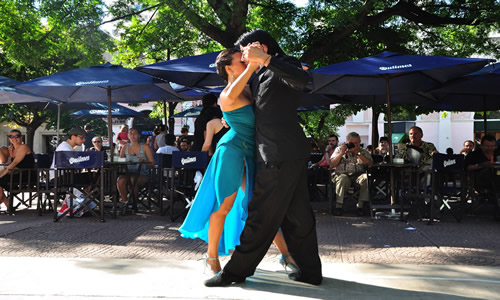San Telmo is one of the most iconic and vibrant neighborhoods in Buenos Aires. Here, history blends with modern culture, creating a unique atmosphere that attracts both tourists and locals.
If you're thinking of visiting Buenos Aires, San Telmo should be at the top of your list. With its cobblestone streets, old buildings, and vibrant nightlife, this neighborhood has everything you could expect from a place full of charm. But what to do in San Telmo? We'll tell you all about it.
Must-See Places
San Telmo is full of historic and charming spots you can't miss. First, make sure to visit Plaza Dorrego, the heart of the neighborhood. This small plaza comes alive on Sundays with the San Telmo Antiques Fair. It's the perfect place to stroll, find a unique souvenir, and enjoy the special atmosphere. Additionally, every Sunday, the square turns into a natural stage for tango dancers, giving it an authentic, nostalgic vibe.
Another must-see is the San Telmo Market, a neighborhood classic that opened in 1897. This market is one of the architectural gems of the area, with its iron structure and mix of fresh produce, traditional foods, and art objects. It’s an ideal spot to enjoy the history while trying some local delicacies.
Don’t forget about the murals and street art that fill the streets of San Telmo. Every corner holds new graffiti that will make you want to take some photos. Calle Defensa is famous for its murals—don't miss it!
Speaking of curiosities, a must-see in San Telmo is the Casa Mínima, the narrowest house in Buenos Aires, just 2.5 meters wide. It's become a symbol of originality in the neighborhood!
Where to Eat
San Telmo is a gastronomic paradise. If you want to try traditional Argentine food with a modern twist, there are options for every taste. A place that never fails is La Brigada, a classic grill where you can enjoy top-quality meats paired with great wines. The vibe is laid-back, making it perfect for enjoying with friends or in a group.
If you prefer something more casual, don't miss El Desnivel, a classic parrilla with affordable prices and delicious homemade food. This spot is loved by the locals.
For something more modern but still Argentine, we recommend Café San Juan, where you can try gourmet versions of traditional dishes in a cozy atmosphere.
If you’re into street food, you’ll find several empanada and choripán stands scattered around San Telmo—perfect for a quick bite or lunch while you explore the neighborhood.

Where to Drink
San Telmo offers a great variety of bars and cafés where you can relax and enjoy a good drink. If you're a fan of well-made cocktails, you can't miss Bar Sur. This classic bar has a unique atmosphere and is the perfect place to start your night.
If you prefer something more laid-back, make sure to visit Bar La Poesía, a bar with a lot of history in Buenos Aires. Its bohemian vibe and literary history make it the ideal spot to enjoy a coffee or drink while soaking up the intellectual spirit of the neighborhood.
For craft beer enthusiasts, San Telmo has several breweries that you'll love. Cervecería Antares is one of the most well-known, offering a variety of local beers you can try with some tapas.
And if you want to experience something more local, step into one of the neighborhood bars and try a good fernet with coke or a mate. You'll feel like one of the locals!
Where to See Tango

San Telmo is the birthplace of tango, and you can’t leave without experiencing it. Plaza Dorrego is the place where dancers gather on Sundays to perform milonga and tango in the street. It's a unique experience that will make you feel part of the porteño tradition.
If you prefer to watch a live show, one of the most famous places to enjoy tango is El Viejo Almacén, which offers a dinner-show where you can enjoy traditional Argentine food while watching an amazing tango performance.
For those ready to dance, San Telmo has several tango schools where you can learn the moves with professionals. One of the best-known is La Viruta Tango Club, where classes and nightly milongas are held.
Best Times to Visit
San Telmo has something for everyone at all hours. If you want to experience it at its peak, we recommend going on a Sunday morning, when Plaza Dorrego fills with tango and the antiques fair is in full swing. It’s the perfect time to soak in the neighborhood’s atmosphere.
If you prefer to avoid the crowds, visit on weekdays, especially in the afternoon when the area is quieter.
At night, the tango spots and bars start filling up around 10 PM, making it the ideal time to enjoy tango, music, and cocktail.